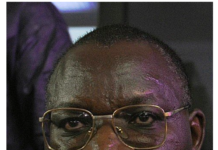Monday 24th January 2022 was an important date for many Ugandans. It was the day the national economy fully reopened after nearly two years of closure.
Bars, nightclubs, restaurants, and other entertainment venues officially closed their doors in March 2020, as the first wave of COVID-19 swept through Africa. While some places continued to operate in secret, they risked legal consequences in doing so.
The date also marked the lifting of the dusk-to-dawn curfew which required Ugandans to stay indoors after dark. It was one of the longest periods of lockdown in the world, alongside the harsh restrictions seen in Asia and Oceania.
A full reopening – except for the Boda Bodas
The economy reopening didn’t come as a surprise. There were rumours that President Museveni was going to take action in the weeks leading up to his speech on 31st December.
In his address to the nation, he announced that every sector was to reopen in the week starting the 24th of January, other than the Boda Boda industry – the motorcycle taxis that operate throughout the country. Museveni said that the Boda Boda drivers ‘should not work under the cover of darkness’ and should continue to respect the 7pm to 5.30am curfew. This was backed up by a government spokesman Chris Baryomunsi later on, who said that the nightly ban on riders was both a COVID-19 and security issue.
Museveni’s lifting of restrictions comes after months of appeals from anti-lockdown campaigners who believe that isolation contributes to mental health issues and behavioural addictions like problem gambling. Certain studies also point to a rise in addiction in Sub-Saharan Africa, but don’t cite lockdowns as a contributing factor. Stakeholders in the Boda Boda industry have called for its own curfew to be lifted, saying it was ‘unfair’ on the drivers, but Baryomunsi said that it was ‘not possible for now’.
Boda Boda drivers and campaigners do have a bit of hope, though. The government are apparently going to meet to discuss whether to lift the restriction soon.
Social distancing measures
The reopening will come with some stringent health and safety measures. Standard Operating Procedures (SOPs) are in place across the country, including wearing masks in bars and keeping the required social distance between people. These were emphasised by Baryomunsi who stressed that the responsibility for these lay with the owners of the establishments.
The measures have also been applied to schools, but there are fears that many of them won’t have the resources to provide masks and sanitary gel. The low turnout by students has also dampened expectations in a country worried about the long-term impact on youth education. Many experts believe the world’s longest school shutdown may have had an irreversible negative effect on children’s reading and writing skills.
Other countries with strict lockdowns
Uganda is not the only country to employ strict lockdown measures. Several nations have employed ‘Zero Covid’ policies where they enter full or partial shutdowns as soon as they detect a case.
Australia and New Zealand are two famous proponents, with Australia only recently lifting restrictions. A low death count of under 50 per week for the first year of the pandemic came at the cost of huge economic damage. This prompted Prime Minister Scott Morrison to fully reopen the economy in December, only to see cases skyrocket to the hundreds of thousands during the Omicron wave. New Zealand, on the other hand, chose to keep its borders closed until the end of February. Rising case numbers there are manageable, according to experts, but leader Jacinda Ardern was still forced to cancel her wedding.
In Asia, experience in dealing with epidemics meant that countries were quick to lock down. China was the first country in the world to do so, after the discovering the first COVID-19 case in Wuhan. The most effective measures on the continent, though, according to experts, came in Taiwan, Singapore, and Hong Kong. The Singaporean strategy was based around communication: a well-timed presidential address by Lee Hsien Loong – described as ‘one of the most beautiful pieces of risk communication’ by one health academic – helped to ease fears in February 2020. This has been followed by successful virus containment measures like social distancing, regular hand-washing and regular government updates. On the flip side, citizens in Asian countries are subject to more controlling measures than in Europe and the U.S.A, including mandatory track-and-trace systems.
A pandemic ‘endgame’
Rising optimism about Omicron cases led to talk of a ‘pandemic endgame’ by WHO Europe director Hans Kluge. But is this talk premature? Especially as any light at the end of the tunnel in Europe will heavily depend on success in African nations like Uganda.
In Uganda, any type of ‘endgame’ seems far away. At the time of writing, almost two million people have been fully vaccinated – only 4% of the population. An increase in inoculation is essential if the country is to manage the reopening of its economy without a major wave in new infections.
































































